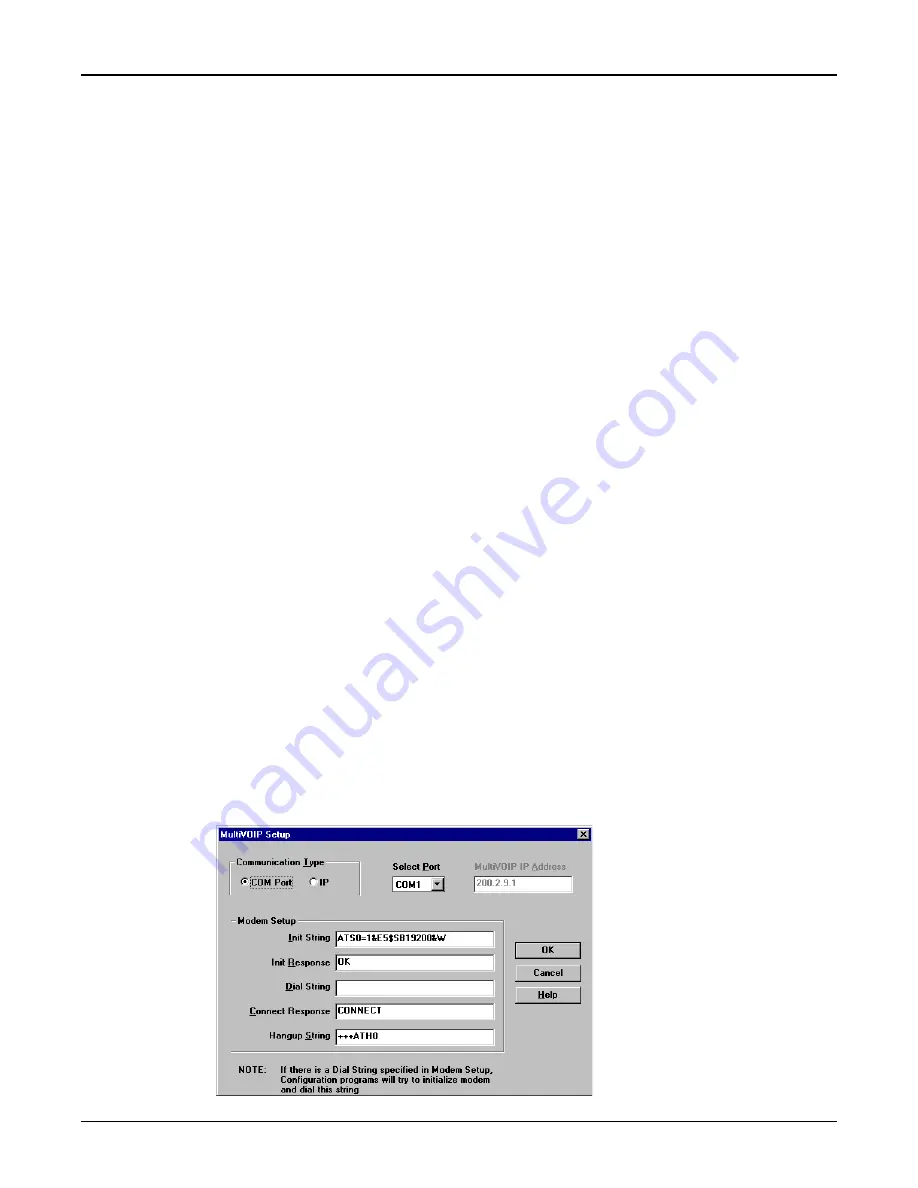
54
MultiVOIP User Guide
Introduction
This chapter provides procedures for viewing or changing the configuration of a remote unit. Two
methods are provided to access a remote unit; the first method is modem based and the second
method is using IP. Within the IP method, three applications can be used: 1) LAN-Based using TFTP
(Trivial lFile Transfer Protocol), 2)Telnet as a client application, or 3) a standard web browser on the
Internet.
Remote Configuration
Remote configuration requires the MultiVOIP software to be loaded on the local PC. The local PC
then controls the remote MultiVOIP either via the modem connection or the LAN.
Modem-Based
To remotely configure a MultiVOIP, a local PC needs to be connected to a dial-up line and the
MultiVOIP software configured to call the remote MultiVOIP. The remote MultiVOIP needs to have a
modem connected to a dial-up line and the Command Port. Once the connection to the remote unit is
made, you can change the configuration as you see fit. Once the configuration is changed, you can
down load the new configuration to the remote MultiVOIP. Refer to the Modem-Based Remote
Configuration Procedure in this chapter to remotely configure a MultiVOIP.
1
At the remote site, remove the serial cable from the PC to the Command Port connector on
the back panel of the MultiVOIP.
2
At the remote site, connect a special cable (Remote Configuration Cable) from the Command
Port connector on the back panel of the MultiVOIP to the RS-232 connector on the modem.
The special cable is a serial cable with male connectors on both ends. Refer to Appendix B
for cable details.
Connect the modem to your local telephone line.
Provide your telephone number to the person verifying your configuration.
Configure the remote modem for 19200 baud and turn on Force DTR.
3
At the main site, connect your local PC to a modem that is connected to a dial-up line.
4
Install the MultiVOIP software on the local PC. When installed, click Start | Programs |
MultiVOIP | Configuration Port Setup, or double click on the Configuration Port icon in
the MultiVOIP program group.
5
The MultiVOIP Setup dialog box is displayed.
Summary of Contents for MultiVOIP 400
Page 1: ...Standalone Voice IP Gateway Models MVP400 and MVP 800 User Guide...
Page 5: ...Chapter 1 Introduction and Description...
Page 14: ...14 MultiVOIP User Guide...
Page 15: ...Chapter 2 Installation...
Page 20: ...20 MultiVOIP User Guide...
Page 21: ...Chapter 3 Software Loading and Configuration...
Page 39: ...Chapter 4 MultiVOIP Software...
Page 53: ...Chapter 5 Remote Configuration and Management...
Page 61: ...Chapter 6 Warranty Service and Tech Support...
Page 66: ...66 MultiVOIP User Guide...
Page 67: ...Appendixes...
Page 75: ...Glossary...






























